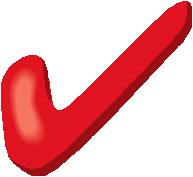|
 |
Engage thinking skills in all the students
activities so they become
part of their everyday lives. |
 |
Heavy use of questions... The answer is in the question.
The student learn in a team approach where they answer
the questions. |
 |
Intelligence can be increased ... "Brain
Plasticity" |
 |
Every problem is an opportunity; The
bigger the problem the bigger the opportunity.
see YouTube video This is the
foundation of Entrepreneurship
"V. Kosla" |
 |
Use the FLIP learning process (Web
page for pre-review of material) |
 |
Interdisciplinary learning approach. |
 |
Classroom atmosphere that includes
trust, risk-taking, originality, listening skills and respect. |
 |
Learning should be "Fun, Engaging" |
 |
Use a system approach to learning: "What do I know",
"What do I need to know", "What have I
learned" and be-able to use it in my life (KWL) |
 |
Class structure: one
hour
-
15 min. of class learning/discussion
-
30 min. of Exercise / Activities by the
teams
-
Break
|
Activities
tied to the curriculum |
|
|
|
 |
Establish an innovation-friendly
environment that embraces fast-cycle sharing, supports
risk taking, and celebrates learning from failure...
Establishing a protective environment. |
 |
- Break problems into small chunks
and study them well.
- Begin with the things that are
simplest to understand and move to the
more complex.
- Never to accept anything as true
that you do not clearly know.
- Be complete in both your work and
reviews that nothing is omitted.
Descartes, Discourse on Methods
|
|
|
|
|
Learning Process
|
Questioning Learning
The students must own the process. It’s not the
teacher asking the question or telling.
Getting them started:
Pick a text, picture or video to have the students
look/read at about the subject we want them to learn.
After they complete to task, ask them the following:
-
What question do you want to ask about this Text,
Video, Picture?
-
What excited you, or made you sad about what we
discussed? Involve the group …Do they agree
or have other questions or thoughts?
-
What
question comes to mind as you consider this
painting/text?
-
What are the
different levels of questions like the BloomTaxonomy?
3.1.3
Project based learning…
Self-direct
learning
o Getting
to know each other
o Team
creation … learning & building a culture
o Picking
a problem to work on
o Problem
solving
o Public
reporting
|
|
|
|
|
Project Rubric:
|
|
|
Beginning
|
Progression
|
Mastery
|
|
|
|
|
|
|
|
Team
Work |
Sees
this as just a group |
Recognizes that this means working together
|
Understand about a culture |
See
themselves as making their teammates successful |
|
SEL
skills |
Not
well behaved |
Stops to think about control |
In
control most times |
Works well with others |
|
Independent studies |
Doesn’t know where to begin |
Can
build a schedule |
|
Does
independent work |
|
Problem solving |
|
Knows the steps |
Lays
out a plan |
Masters each step |
|
Business focus |
Not
sure what this means |
Beginning to understand “the Agenda” |
Articulate about the customer needs
|
Can
set measurements to make the customer and
company successful |
|
Process understanding |
|
Lays
out the elements |
Can
set the flow map |
Provides the measurements |
|
Questioning skills |
Random questions |
Yes/no questions |
Understands open ended questions |
Uses
questions as part of the learning process |
|
Reflection |
Does
not think of the past |
Understands what they learned |
Connects the thoughts in discussion of what they
learned |
Uses
their discuss to learn from what they did
|
|
Presentation skills |
Randomly tells a story |
Begins to organize their thought
|
Organizes their thought |
Organizes and understands what their customers
need |
|
|
|
|
|
|
|
|
|
|
